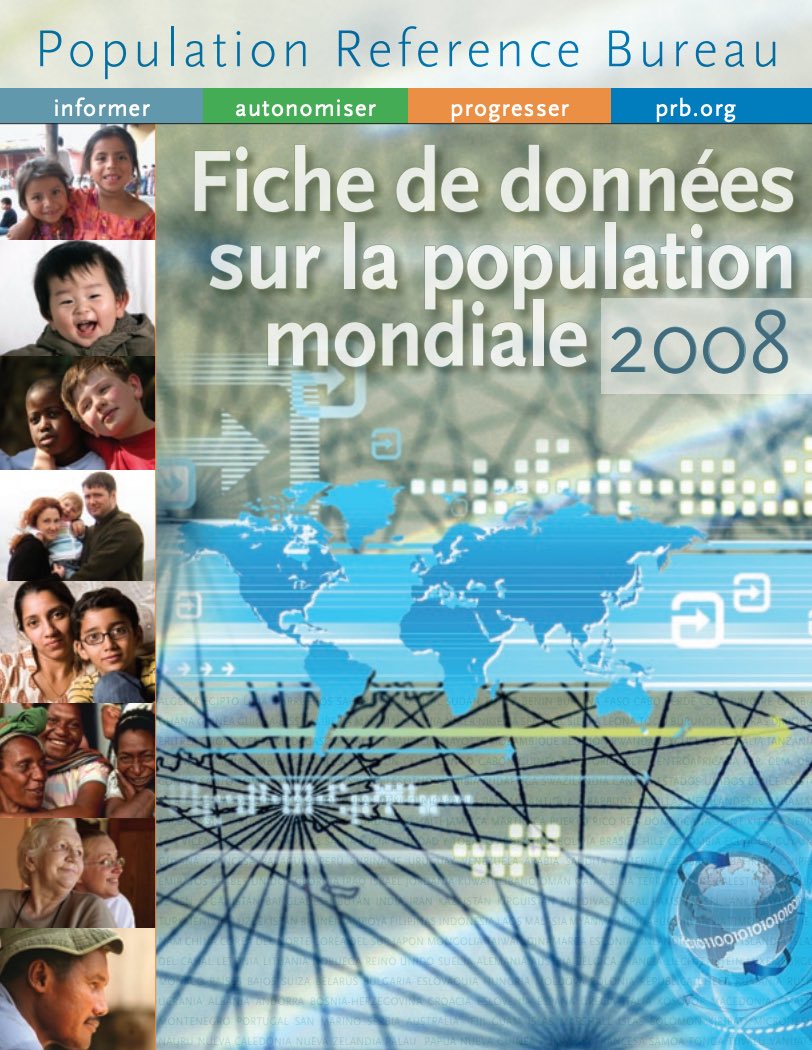Fiche de données sur la population mondiale 2008 (PDF)
(2008) The demographic divide—the inequality in the population and health profiles of rich and poor countries—is widening.

(2008) The demographic divide—the inequality in the population and health profiles of rich and poor countries—is widening.
(2004) Human beings have become an increasingly powerful environmental force over the last 10,000 years. With the advent of agriculture 8,000 years ago, we began to change the land.1
(2010) Cette année, la Journée Mondiale de la Santé (7 avril) se concentre sur l’importance de la santé urbaine. L’urbanisation advient si rapidement dans certaines régions du monde que les villes ne sont pas à même de répondre aux demandes accrues de services liés à l’environnement, la santé et l’éducation, sans oublier les besoins en matière d’emploi, de logement et de transport d’une population qui pourrait doubler en moins de 25 ans.
(2009) Climate change may adversely affect the population in many parts of the globe, in particular in developing countries where there is still substantial population growth.

Older adults’ housing challenges reflect social and financial inequalities and can lead to poor health.

(2019) More than 300 million people live in the United States and getting an accurate count of each and every one of them is no easy feat. As the U.S. population has grown—from just under 4 million in 1790 to more than 329 million in 2019—the Census Bureau’s enumeration methods (how they count people) have evolved to adapt to new technologies, increase efficiency and accuracy, and help to control rising costs.